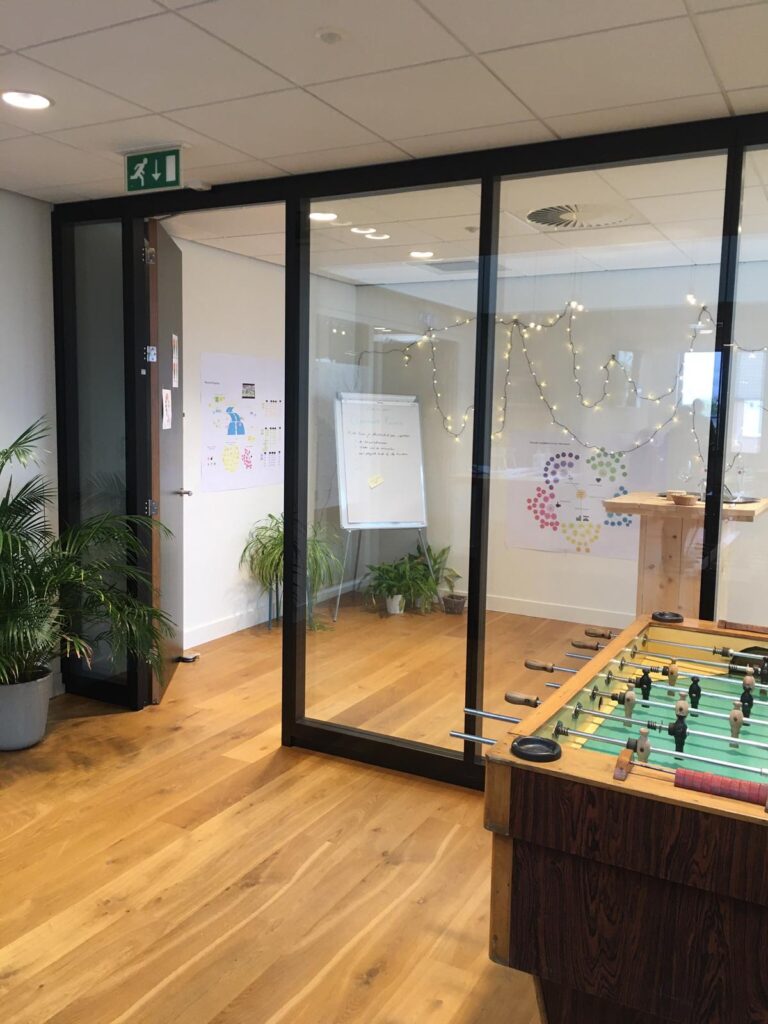Today’s business is becoming more and more challenging. Demands from customers are growing and competition is innovating at a rapid pace. Companies who are not able to adapt in this rapidly changing environment will lose. Traditionally companies are organized in top-down hierarchies. These rigid structures worked excellent in a static environment, but are not able to adapt at a pace that is required by today’s business challenges. PAR unleashes full creativity throughout the organization tapping into the talents of all employees.
What would happen if employees co-design and realize their own projects rather than participating in top-down projects?
In our Participatory Action Researches we have seen remarkable results when people get the chance to work together in researching their shared reality, discovering new options and co-design and realize projects they feel ownership of. Although it means we sometimes need to deviate from the initial goals of the board, we are confident these goals will be -albeit indirectly- met, tapping into the power of the masses: people.
We are fully aware that public organizations are often squeezed between high expectations of shareholders and the demands of customers, which do not always align. Therefore, we also offer inspiration sessions to board members and employees on how PAR can aid in bridging this gap (link).
What to expect
Organisations who dare to deviate from predefined project goals and ticking off boxes, open to approach a complex sustainability problem using Participatory Action Research may expect:
- Employees as well as customers feeling heard, one of the first building blocks of a sense of ownership;
- Stakeholders looking at a situation from multiple different angles, resulting in increased mutual understanding of other people’s perspectives;
- Stakeholders seeing commercial issues in a whole new way they did not see before, broadening their perspectives and sparking creativity;
- Stakeholders brainstorming together -using these broadened perspectives and new creativity- and generating ideas each one separately would not have thought of before, resulting in social learning and first steps in innovation;
- The co-creation of new action plans by employees and sometimes also customers of which they feel ownership and motivation to make it a success;
- Stakeholders realizing the action plans together by intrinsic motivation, in a way that suits their needs, norms and values and culture;
- Managers viewing the co-creation process gain confidence that the plans created by their employees and customers will lead to desired outcomes, and as a result will give room to their employees to implement these plans in their own self-organizing way;
- Sometimes, as a side effect: increased levels of trust in other stakeholders and recovery of broken work relations
Note that by stakeholders we mean shareholders, business leaders, employees, customers and all in between: all who are involved in or affected by the initial problem. That means that as a commissioning department, you will probably take on an active role in the design as well as the realization of the action plan as well.
Hire us
You can hire us as Participatory Action Researchers to perform PAR on an organizational issue. Based on our first conversation, we make a preliminary PAR-design. This design will be tested during a first Orientation, in which we have a first set of informal conversations with other stakeholders. Based on those conversations, we adapt our preliminary PAR-design into a workable PAR-design, which we discuss with you. Once accepted, we continue our PAR by collecting data and perspectives on the PAR-subject. We then share those results with stakeholders and facilitate the process in which they co-create and kick-off their action plan. During monitoring we stay tuned on its process and facilitate reflection and any required finetuning of the action plans. This process usually takes a few months up to as long as required, depending on the scope of the PAR. Let’s discuss our options!

